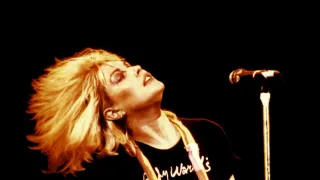
4 hours ago
Bette Midler, The Continental Baths, and Barry Manilow: A Defining Chapter in LGBTQ+ History
READ TIME: 4 MIN.
In the late 1960s, the LGBTQ+ community in New York City faced rampant discrimination, criminalization, and social marginalization. Against this backdrop, Steve Ostrow, a former opera singer, envisioned an alternative to the clandestine and often unsafe gay bathhouses of the era. In 1968, he opened the Continental Baths in the vast, labyrinthine basement of the Ansonia Hotel on Manhattan’s Upper West Side, aiming to create a “gay fantasia, a palace devoted to hedonism” that would redefine queer nightlife and community gathering spaces .
With its Roman-inspired decor, the Continental Baths offered amenities far beyond those of its contemporaries: a disco dance floor, a cabaret lounge with a baby grand piano, a swimming pool with a cascading waterfall, saunas, bunk beds, and private rooms. The venue was open 24/7 and could accommodate up to 1,000 patrons. Ostrow later added a stage for live entertainment, a licensed bar, a restaurant, an STD clinic, a clothing boutique, and even a rooftop sun deck .
By the early 1970s, the Continental Baths had become a nucleus of gay liberation and creative experimentation, especially in the wake of the Stonewall riots. Amid the cascade of disco music, laughter, and social exchange, a young singer named Bette Midler began performing at the venue, accompanied by her pianist Barry Manilow. Her shows, delivered to crowds of gay men—some wrapped only in towels—soon became legendary .
Midler’s dynamic stage presence and heartfelt vocals, paired with Manilow’s energetic piano accompaniment (he often performed in a towel himself), electrified audiences. The duo’s cabaret-style acts were marked by irreverent humor, emotional ballads, and a sense of solidarity with the LGBTQ+ community. Midler debuted her song “Friends” at the baths, a track that would later encapsulate the spirit of the era and her connection to her audience . The crowd affectionately nicknamed her “Bathhouse Betty,” a moniker she would later embrace as a badge of honor and the title of a 1998 album .
Reflecting on her time at the Continental Baths, Midler has said, “Despite the way things turned out , I'm still proud of those days . I feel like I was at the forefront of the gay liberation movement, and I hope I did my part to help it move forward. So, I kind of wear the label of'Bathhouse Betty' with pride” .
Barry Manilow’s role as Midler’s accompanist at the Continental Baths was transformative for his own career. His musical direction, arrangements, and spirited piano playing became essential elements of Midler’s act. The unique atmosphere of the venue offered Manilow a chance to hone his craft in front of a lively, discerning audience .
The relationship between Manilow and Midler extended beyond the baths; he would go on to produce her breakthrough debut album “The Divine Miss M” in 1972, which launched both artists to national fame . Their collaboration at the Continental Baths is widely credited as a turning point, not just for their careers, but for the ways in which LGBTQ+ spaces could serve as incubators for mainstream talent.
The Continental Baths was much more than a nightlife venue; it was a crucible for the early post-Stonewall LGBTQ+ movement. Performances by Midler, Manilow, and other future stars like Labelle, The Manhattan Transfer, and Melba Moore created a bridge between queer culture and the broader entertainment world .
The club’s open-door policy for live shows (which eventually allowed the general public to attend) contributed to its fame, but also led to tensions. Some regular patrons felt uncomfortable with outsiders “gawking” at the intimate environment, eventually leading to a decline in the gay crowd and the cancellation of live performances in 1974 .
Still, the impact of the Continental Baths’ entertainment legacy is profound. The venue helped to redefine what was possible for LGBTQ+ nightlife—introducing the first DJ-specific stage in the world, launching the careers of iconic artists, and serving as a safe space for community-building during a period of immense social change .
The story of Bette Midler, Barry Manilow, and the Continental Baths is enshrined in queer history as an example of resilience, creativity, and the power of chosen family. At a time when few mainstream spaces accepted LGBTQ+ identities, the Continental Baths offered a refuge for self-expression and joy, even as it faced frequent police raids and the ongoing threat of discrimination .
Midler’s later success as a Grammy, Emmy, and Tony Award-winning artist, and Manilow’s rise to global stardom, both trace their origins to the raucous, loving crowds of the Continental Baths. Their willingness to embrace and celebrate their queer audience, rather than hide it, set a precedent for future generations of artists and allies.
In interviews and retrospectives, both Midler and Manilow have voiced pride in their connections to the LGBTQ+ community and the formative influence of the Continental Baths on their artistry . As the LGBTQ+ rights movement has progressed, their story stands as a testament to the enduring impact of queer spaces and the artists who champion them.
The Continental Baths, and the now-legendary partnership of Bette Midler and Barry Manilow, represent a singular chapter in the tapestry of LGBTQ+ and American cultural history. Their journey from a subterranean stage to international acclaim is an enduring reminder of the transformative power of community, courage, and artistry.






